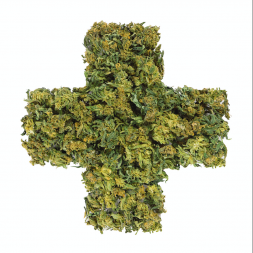Cannabis Considerations: Treating Patients Who Use Marijuana
I’m originally from the Washington State, one of our country’s more progressive states when it comes to legalizing marijuana. When I visit home now, I see dispensaries scattered along the roadsides. With cannabis use now permissible in an increasing number of states and attention to the drug on the rise, nurse practitioners are more likely than ever to treat patients who are cannabis users. As with any substance, marijuana use brings up a number of clinical considerations. For example, does cannabis interact with prescription drugs?
If you live in a state where marijuana is legal, or if you see a number of patients who use the drug, its a good idea to familiarize yourself with the answers to these questions. Here are a few clinical pearls I’ve pulled from my own practice as a nurse practitioner in the emergency department.
Why do marijuana users come to the clinic or hospital?
Most often, the immediate effects of marijuana use aren’t significant enough for individuals to seek medical attention. So, if you’ve got a patient in your exam room with a medical complaint related to getting ‘high’ on cannabis, listen up and consider differential diagnoses (ex. ingestion of additional psychotropic agents, CNS infection etc.). Here are a few red flags to watch out for that are diretly related to cannabis use.
1. Hyperemesis – Marijuana use can cause a hyperemesis syndrome with symptoms of persistent nausea, vomiting and abdominal pain. Typically, these symptoms are relieved with a hot shower or bath. More on this syndrome later.
2. Behavioral problems – Research links psych disorders, particularly schizophrenia with cannabis use. In some, the drug can also cause acute psychosis. So, the problem here could be a real underlying psychiatric issue rather than just a ‘high’.
3. Trauma – Cannabis essentially acts like a dimmer switch for neuronal activity. So, just like with other drugs and alcohol it leaves users impaired when it comes to things like driving or operating heavy machinery. This leads to accidents.
4. Chest pain – In rare cases, marijuana use can cause medical emergencies like pneumothorax, myocardial infarction or bronchospasm related to method of inhalation. The risk for myocardial infarction is greatest within the first 60 minutes of use.
 Yes, pot can make you vomit. A lot. What is cannabis hyperemesis syndrome?
Yes, pot can make you vomit. A lot. What is cannabis hyperemesis syndrome?
The pathophysiology of hyperemesis with cannabis use remains unclear. But, marijuana use can cause significant nausea, vomiting and abdominal pain in some users. Interestingly symptoms subside with a hot shower causing sufferers to bathe repeatedly. This syndrome is most common in individuals who are daily cannabis users for at least one year. The treatment? Stop smoking weed. Symptoms usually resolve within one or two days of cessation. If symptoms don’t resolve within two weeks of cannabis cessation, another problem is likely to blame for nausea and vomiting – look for another cause.
Synthetic cannabinoids are different. How?
Synthetic cannabinoids with street names like “K2” and “Spice” have a different clinical structure than cannabis but act similarly. Their use, however yields more profound effects than those seen with marijuana. Synthetic cannabinoids, for example, may lead to agitation, aggressive behavior, seizures and psychosis. They can also cause hypertension, kidney failure and have cardiac effects like QTc prolongation. Acute ingestion can be difficult to diagnose as synthetic cannabinoids won’t show up on a drug screen.
Drug Screening Quick Tips
Here are a few rapid fire tips about drug testing related to cannabis:
1. Urine drug screen becomes positive several hours after cannabis exposure.
2. A drug screen is expected to be positive up to 10 days after exposure to cannabis on an approximately weekly basis and for up to 25 days after approximate daily exposure.
3. Drug screening for cannabis does not give specific information about the timeline or severity of ingestion.
4. Just say ‘no’ to the contact high myth. Passive inhalation of marijuana is very unlikely to yield a positive drug screen result.
Are there any drug-drug interactions to worry about with marijuana use?
THC, the active ingredient in marijuana, is metabolized by the CYP2C9 and the famous CYP34A enzyme pathways. So, there is potential for marijuana to interact with any medications that are similarly metabolized by these pathways. Drugs metabolized by the CYP34A pathway include (but are not limited to) things like clarithromycin, erythromycin, itraconazole, ketoconazole, protease inhibitors, calcium channel blockers and more. The clinical significance of such potential interactions hasn’t been established.
Does cannabis use have long-term psychiatric effects?
So, this is a bit of a chicken-or-the-egg question. We do know that there are high rates of psychiatric comorbidity with cannabis use. In fact, individuals with mood disorders are 2-3 times more likely to use cannabis and develop cannabis use disorder after beginning use. Cannabis users also have a two to threefold increased prevalence of schizophrenia compared to non-users.
It’s unclear if cannabis actually causes psychiatric problems like mood disorders and schizophrenia, or if both conditions simply have similar risk factors. Earlier age of onset of cannabis use, more intense use and using products with a greater concentration of THC are more strongly associated with the development of psychiatric conditions. Chronic cannabis use during adolescence, for example, has been strongly correlated with later development of schizophrenia.
What other long-term effects should I be aware of for my patients?
It’s difficult to determine the long-term effects of cannabis as many users also ingest other substances such as tobacco. Sample sizes in studies of cannabis use also tend to be small leading to less reliable data. So, this is a developing area of research. Here’s a bit about what we know so far:
- Neurologic effects – Chronic cannabis use can lead to reduced hippocampal brain volume and decreased neuronal activity in some areas of the brain. Research is mixed on the effect this has on cognitive function. Some studies show that cognitive effects are time limited while others suggest they may be permanent, at least in some areas.
- Pulmonary effects – Like cigarette smoke, cannabis smoke contains many respiratory irritants and carcinogens (though not nicotine). This irritates the airways and cause cough, sputum production and inflammation. These effects tend to be acute in nature, data about long-term respiratory effects of cannabis use is inconclusive.
- Cardiovascular effects – Cannabis use has been associated with stroke and atrial fibrillation, though the risk appears to be small. It has also been associated with acute myocardial infarction shortly after use. Again, this is rare.
- Reproductive effects – Interestingly, cannabis disrupts certain reproductive hormone pathways, namely the hypothalmic-pituitary-adrenal axis that plays a role in sperm production. Cannabis use is associated with lower sperm counts and decreased sperm functionality. It also disrupts prolactin production. Chronic users have prolactin levels about 20% lower than non-users which can have effects like reduced lactation.
- Oral effects – Cannabis use is associated with poor oral health including inflamed oral mucosa, periodontal disease and oral candidiasis.
Resources:
Cannabis (marijuana): Acute Intoxication
You Might Also Like: How to Tell a Patient “I Don’t Know”

